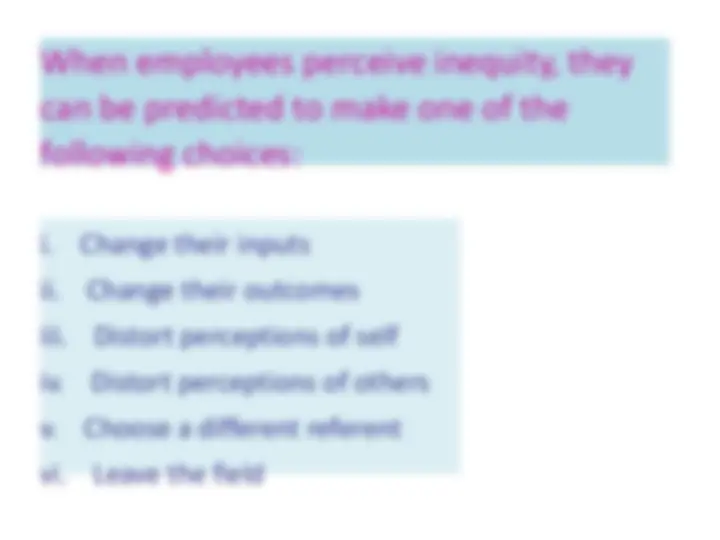











Study with the several resources on Docsity

Earn points by helping other students or get them with a premium plan


Prepare for your exams
Study with the several resources on Docsity

Earn points to download
Earn points by helping other students or get them with a premium plan
Community
Ask the community for help and clear up your study doubts
Discover the best universities in your country according to Docsity users
Free resources
Download our free guides on studying techniques, anxiety management strategies, and thesis advice from Docsity tutors
Inputs and Outcomes of Adam equity theory of Motivation.
Typology: Slides
1 / 16

This page cannot be seen from the preview
Don't miss anything!










♦ > ♦ > ♦ > ♦ > INTRODUCTION
Adam's EQUITY THEORY diagram Balance ’calibrated' and measured against comparable references in the market-place. People become demotivated and reduce input and/or seek change or improvement whenever they feei their inputs are not being fairly rewarded by outputs. Fairness is based on perceived market norms. What I put into my job: time, effort, ability, loyalty, tolerance, flexibility, integrity, commitment, reliability, heart and soul, personal sacrifice, etc What I get from my job: pay, bonus, perks, benefits, security, recognition, interest, development, reputation, praise, responsibility, enjoyment, etc outputs
Referent comparisons are categorised under:
The structure of equity in the workplace is based on the ratio of inputs to outcomes. RATIO COMPARISONS PERCEPTION (^) SITUATION OF AN EMPLOYEE Individual’s outcome < Other’s outcome Individual’s input Other’s input Inequity Anger Individual’s outcome = Other’s outcome Individual’s input Other’s input Equity^ Satisfied Individual’s outcome > Other’s outcome Individual’s input Other’s input Inequity Pride, Over confidence and Guilt
The theory establishes the following propositions relating to inequitable pay:
EQUALITY VS EQUITY
Assumptions:
Employees expect a fair return for what they contribute to their jobs.
Employees determine what their equitable return should be after comparing their inputs and outcomes with those of their coworkers.
Employees who perceive themselves as being in an inequitable situation will seek to reduce the inequity either by distorting inputs and/or outcomes in their own minds, by directly altering inputs and/or outputs, or by leaving the organization.